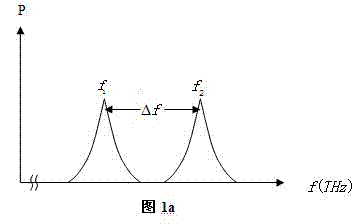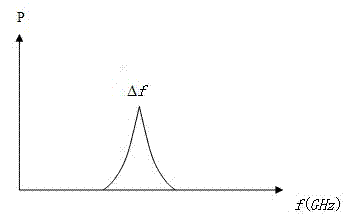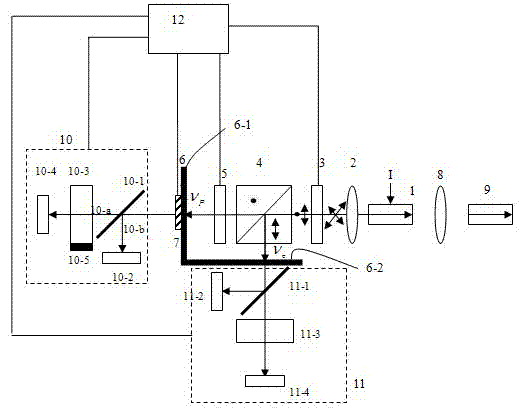Dual-frequency-laser-based photoproduction tunable microwave source and frequency stabilization control method
A dual-frequency laser and microwave source technology, applied in the field of communication, can solve the problems of difficulty in stabilization, large attenuation of microwave signal transmission, short microwave wavelength, etc., and achieve the effect of stable phase relationship
- Summary
- Abstract
- Description
- Claims
- Application Information
AI Technical Summary
Problems solved by technology
Method used
Image
Examples
Embodiment Construction
[0047] The present invention will be further described below in conjunction with the accompanying drawings and embodiments.
[0048] The structure of the optically generated microwave device based on the dual-frequency laser of the present invention includes a resonant cavity system for generating the dual-frequency laser, a detection and frequency stabilization system for beat-frequency microwave signals, and a control unit of the entire system. The resonant cavity system of the dual-frequency laser consists of a semiconductor optical amplifier chip 1, a collimator lens 2, a controllable half-wave plate 3, a polarization beam splitter prism 4, a tunable filter 5, and a mirror 6 arranged in sequence. mirror 6 by v p Signal light reflecting cavity mirror 6-1 and v s The mirror surface 6-2 of the signal light reflection cavity is combined in an L shape, v p Signal light reflecting cavity mirror 6-1 and v s The signal light reflective cavity mirror 6-2 forms a resonant cavity ...
PUM
 Login to View More
Login to View More Abstract
Description
Claims
Application Information
 Login to View More
Login to View More - R&D
- Intellectual Property
- Life Sciences
- Materials
- Tech Scout
- Unparalleled Data Quality
- Higher Quality Content
- 60% Fewer Hallucinations
Browse by: Latest US Patents, China's latest patents, Technical Efficacy Thesaurus, Application Domain, Technology Topic, Popular Technical Reports.
© 2025 PatSnap. All rights reserved.Legal|Privacy policy|Modern Slavery Act Transparency Statement|Sitemap|About US| Contact US: help@patsnap.com



